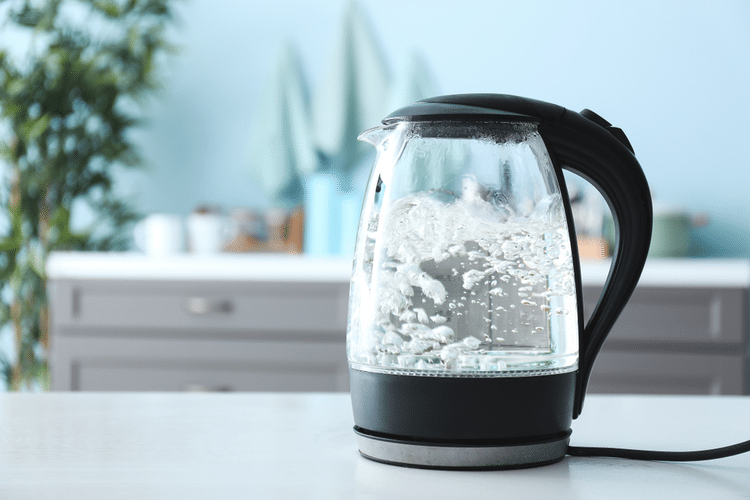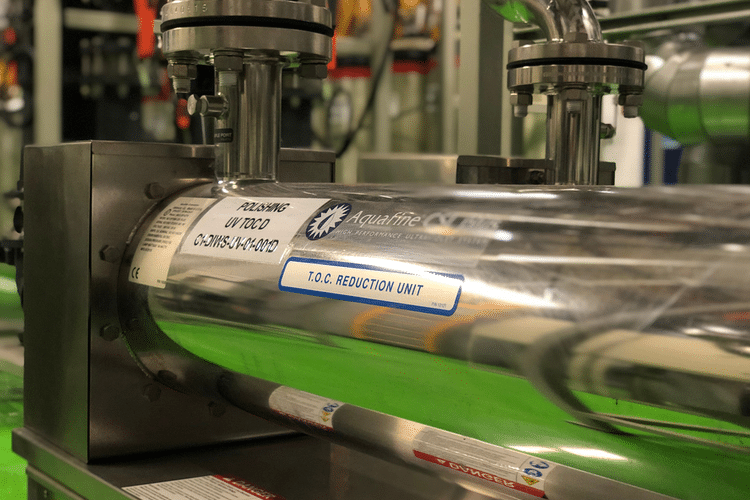According to the World Health Organization (WHO), at least two billion people on Earth drink water that’s potentially contaminated with viruses. More than 7 million people in the US suffer from illnesses due to waterborne pathogens.
Viruses find their way into the human body through contaminated drinking water. In this article, we will explain how viruses infiltrate our water and how they can be killed before consumption.
How Viruses Get in Water
Viruses can contaminate water through contact with fecal material from an infected person or animal. When we consume water infected with fecal material, we also become infected.
Contamination is common in wild surface waters such as streams and lakes. Animals (including humans) defecate on the ground, and rainwater runoff washes the fecal material into a lake or stream. That’s why experts don’t recommend drinking directly from an open water source like a lake.
Moreover, viruses can easily contaminate water wells if the wells aren’t properly sealed or if contaminated surface water leaks into the well or directly to the water source. Even in well-constructed wells, viruses can still sneak in if untreated sewage water or septic runoff makes its way into the area’s water table (the geological boundary between the surface and the underground water source).
The Most Common Viruses Found in Drinking Water
There can be a plethora of viral pathogens in water contaminated with feces. However, not all of them cause serious health issues, and some only give you a mild case of diarrhea.
According to the WHO, the viruses that cause moderate-to-high health risks are:
- Hepatitis A and E: Both can cause high morbidity rates, especially among immuno-compromised people, children, pregnant women, and HIV-positive people.
- Rotavirus: Children under five are vulnerable to rotavirus, a virus that can cause severe acute diarrhea, which leads to half-a-million annual deaths.
- Norovirus: Similar to rotavirus, children experience acute cases of diarrhea when exposed to norovirus. Its main symptom in adults, on the other hand, is vomiting.
- Enterovirus: The most common symptoms of enterovirus are fever and respiratory problems similar to the flu. However, variations like enterovirus 68 and 71 can cause more severe neurological issues like meningitis, encephalitis, and acute breathing difficulties in children.
- Polyomavirus: Though not as common as the other viruses on this list, polyomavirus can still be present in drinking water. It can cause various types of cancers and progressive multifocal leukoencephalopathy.
How to Remove Viruses From Water
The most common methods to remove viruses from water are:
- Boiling: Heating the water to a rolling boil for at least one minute.
- Distillation: Boiling the water until it’s all gas.
- UV lights: Exposing the water to ultraviolet radiation.
- Ozone: Adding ozone gas to water.
- Ultrafiltration: Pushing the water through a filter that has microscopic to remove the viruses physically.
- Reverse osmosis: Pushing the water through a semi-permeable membrane with even more microscopic pores than ultra-filters.
Boiling
Boiling water is a sure-fire way to kill viruses. Viruses are made up of proteins, and subjecting them to heat disrupts and denatures their vital processes, causing definitive damage to viral structures.

To kill all the viruses, you must boil the water for at least one minute. However, in high elevation areas over 6,500 feet, you may need to boil it for three minutes to ensure that all viral pathogens are removed.
Once the water is boiled, and viruses are killed, you can cool the treated water by storing it in the refrigerator.
Distillation
During the distillation process, the water is boiled until it turns into a gas and moves into another container. Once all the water is turned to gas, neither cellular nor molecular contaminants can find anything to hold onto. The gas is cooled down and returned to its original container contaminant-free.
There are point-of-use (POU) and point-of-entry (POE) distillation systems and countertop products you can use in the kitchen. Although the first two of these systems might be costly ($300-$1,200), they can provide uncontaminated drinking water for large households.
Countertop water distillers, on the other hand, are ideal for producing pure water for small families and single people. They’re also relatively affordable, as you can find one suited to your purposes for less than $200.
Chemical Treatment
The most common chemical used for killing viruses in water is chlorine, and it’s been utilized by municipal water treatment facilities as a disinfectant for over a century.

Tap water is regularly chemically treated with chlorine to kill viruses. Chlorine is also used to treat iron bacteria in well water, but continuous use is discouraged since it can mask the presence of other contaminants in the water.
In emergency situations, such as after an earthquake or tsunami, chlorine bleach can also be used to disinfect water. That’s right, the same stuff you use to get your whites whiter can also kill viruses in your drinking water.
Iodine tablets, often used by back-country hikers, are a convenient way to treat small amounts of water. They can be used to disinfect surface waters when camping or hiking, but they’re not a practical solution for providing safe water to your household.
Lastly, be wary of the fact that chemicals have a shelf life. Old chlorine or iodine will be less effective at killing viruses.
UV Light Water Disinfection System
Ultraviolet light causes damage to the genetic structure of viruses, killing them in as little as a few minutes. A UV light water purifier system should be installed as the last step in reverse osmosis and whole house filtration to ensure that all the viral pathogens are successfully removed.

However, there’s a drawback: the virus must be close to the light for the process to work. Also, sediment in the water can block the light shading and protect the virus. Moreover, UV light doesn’t have a residual effect. Once the water passes the light, new bacteria and viruses can grow.
This is why UV lights are often the last filtration step in treatment units.
Ozone
When most people think of ozone, they think of the atmosphere’s protective layer, but it’s actually a highly reactive gas with organic compounds. It can be manufactured and used to treat water.
Ozone oxidizes biological matters like bacteria and viruses. However, ozone treatment is expensive and dangerous, so it’s primarily utilized to disinfect large volumes of wastewater.
Ultrafiltration
Most filters can’t remove viruses, since they’re microscopic and can move through most of them pretty easily. However, there are ultra-filters with 0.01-micron pores that can filter some viruses.
Although ultrafiltration is deemed to be only moderately effective against removing viruses, the 0.01-micron pores can handle all the dangerous viruses we listed above. In addition, these units are pretty affordable.
Reverse Osmosis
In reverse osmosis (RO) processes, the incoming water is pushed through a semi-permeable membrane that separates contaminated water from purified water. The membranes of most RO systems, at least the best ones, have 0.0001-micron pores that don’t allow viruses to make their way into the water.
Therefore, RO is one of the most effective treatment methods for virus-infected water. However, its wastewater ratio is very high, and the best RO systems on the market are quite expensive.
Water Filters That Removes Viruses
Viruses are microscopic, with the smallest measuring only 12 nanometers, about 1/1000th the width of human hair. If you want to remove them with a filtration system, the pore size of the filter should also be at least 0.0001-micron.
RO systems with a 0.0001-micron semi-permeable membrane are the best water filters that removes viruses. The Aquasana OptimH2O RO System is an NSF-certified affordable option that features a super-effective membrane.
Additionally, you can use a treatment system that features a combination of different virus removal methods. We recommend the Waterdrop G3 P800, which employs UV sterilization after the RO filtration.
Similar to the Waterdrop unit, there are also whole-home filtration systems that use different filters with disinfection methods like UV Light Systems. These systems first treat the water through a standard carbon filter or a membrane and then subject it to ultraviolet light to sterilize all impurities.
For cooking and drinking, we recommend distillation devices. There are many viable countertop options that can serve small households. For those who love hiking and camping in remote locations where accessing clean water isn’t an option, on the other hand, there are several portable filters on the market. However, it’s worth noting that not all of these filters remove all kinds of viruses, so it might be safer to use both filtration and disinfection.
Conclusion
Viruses can end up in our drinking water through fecal runoff and cause several illnesses. Fortunately, there are several methods to kill or remove them. Although boiling is a bit ineffective for large scale treatment, it’s a very effective method for killing viruses. Distillation, a similar method, is also very effective.
Chemical treatment techniques like chlorination and iodine tablets can disinfect water of viral pathogens. Ozone treatment, on the other hand, though very effective in killing viruses, isn’t applicable for household use due to its in-affordability and dangers.
There are also a couple of water-purifying techniques that can remove viruses: UV sterilization, ultrafiltration, and reverse osmosis. However, ultrafiltration can’t remove all viruses since ultrafilter pores are bigger than some viruses. UV lights work best as the last step of water treatment.
That only leaves us with the best and safest method: a filtration system that has both RO and UV lights.